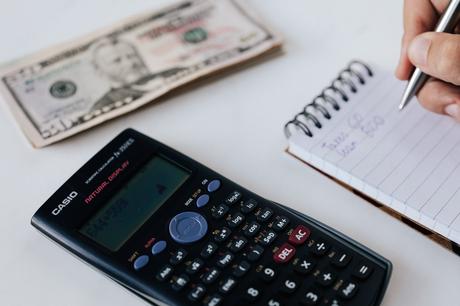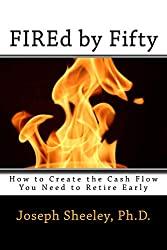
Photo by Karolina Grabowska on Pexels.com
" data-orig-size="1880,1253" data-image-title="crop unrecognizable accountant counting savings using notebook and calculator" data-orig-file="https://smallivy.files.wordpress.com/2022/07/pexels-photo-4386325.jpeg" data-image-description="" data-image-meta="{"aperture":"0","credit":"","camera":"","caption":"","created_timestamp":"0","copyright":"","focal_length":"0","iso":"0","shutter_speed":"0","title":"","orientation":"0"}" data-medium-file="https://smallivy.files.wordpress.com/2022/07/pexels-photo-4386325.jpeg?w=300" data-permalink="https://smallivy.com/2022/07/04/adult-your-finances-setting-up-a-budget/pexels-photo-4386325/" alt="" class="wp-image-21943" data-large-file="https://smallivy.files.wordpress.com/2022/07/pexels-photo-4386325.jpeg?w=723" />Photo by Karolina Grabowska on Pexels.comGoing from relying on Mom and Dad to relying on yourself can be scary. Back in the pioneer days, being on your own could mean building your home, growing and gathering your food, gathering wood for heat and cooking, plus making your own clothes, tools, and furniture. If you didn’t succeed, you would probably die. The good news is that it really isn’t all that hard today. Plus, failing probably just means going back home to stay with Mom and Dad for a while until you get back on your feet.
Still, who wants to do that? In this series (Adult your Finances), we’ll provide the basics you need to know to improve your chances of successfully adulting financially. Do these things and you’re almost assured of surviving and thriving. In today’s article, we’ll cover what every successful adult needs: a budget.
Hey – if you like The Small Investor, help keep it going. Buy a copy of the SmallIvy Book of Investing: Book1: Investing to Grow Wealthy or just click on one of the product links below, then browse and buy something you need from Amazon’s huge collection. The Small Investor will make a small commission each time you buy a product through one of our links.

Why you need a budget
Say the word, “budget,” and many people cringe. “I don’t want to scrimp and save,” they say. But really you have the same amount of money whether you pull together and follow a budget or not. All that having a budget does is to help you spend your money on things you want and need rather than on the random stuff that comes along throughout your day. Really, most people feel like they are wealthier once they have a budget because they get to use the money they have effectively. They aren’t spending a lot of it on stuff they don’t remember buying.
A budget also helps keep you out of tough positions and gives you the information you need to make decisions. This helps lower anxiety. You don’t want to get to the end of the month and discover that you don’t have money for the rent or to electricity bill. You don’t want to be wondering if you can get to work because you don’t have money to put gas in your car. And you don’t want to be wondering as you contemplate buying another round of drinks at the bar whether you’ll have enough money to buy the things you’ll need later or not if you do.
With a budget, you set aside the money you need for the important things and decide what you want to save and what you want to give. You even set aside money for the unimportant but enjoyable things, because it is better to live than it is to just survive. A budget lets you spend on things without worry and lets you get the most out of your income. A budget can also help you find money to save and invest, which allows your income to grow and helps keep you out of income-killing debt.


Want all the details on using Investing to grow financially Independent? Try The SmallIvy Book of Investing.
How to make a budget
Making a budget can be as simple as writing things down on a piece of paper or developing a complex spreadsheet that helps automate some of the process for you. There are also several budgeting apps you can use. (Note, I don’t use these apps since many need to tie into your bank accounts, which seems creepy to me, but that would allow you to automate some of the tracking to see if you’re following your budget.) The key to a good budget is listing all of your income and all of your expenses, then adjusting your expenses based on their priority until your income at least equals your total expenses. If your expenses exceed your income, you need to cut things or figure out how to increase your income since you can’t keep spending more than you’re earning for long. If your income exceeds your expenses, you can put the extra money into savings (or add something else to your expenses if you already have plenty in savings).
Most people budget for a month of time and then create a new budget before the next month starts. Because there will be some months where you have more expenses, however, it is better to have both a yearly and a monthly budget. First you make sure you have enough income to cover your expenses for the year (and cut back on lifestyle if you don’t), then you create a budget each month where you specify income and spending for that month. Because you know you’ll have bigger spending months where your expenses will probably exceed your income, your budgets for the months in which you have low expenses should include moving money into savings to cover the high expense months.
For example, we have car and home insurance bills due in January for the full year, so our January expenses are several thousand dollars more than a typical month. We therefore let our savings account balance grow throughout the year so that we’ll have the money needed in January. If you want, you can divide up these extra expenses by twelve months and add a “payment” into your savings account each month as an expense.
So, an example yearly budget might look like this:
Income SourceYearly Amount
Jane’s Salary$45,000
John’s Salary$24,000
Bank Interest$2
Craft Fairs$650
Total Income$69,652
Expenses
Yearly Amount
Rent$12,000
Groceries$4800
Utilities$3600
Car Payment$14,400
Travel/Vacations$15,000
Eating Out/Entertainment$4800
NetFlix$180
Clothing$4800
Car Insurance$2400
Renters Insurance$240
Total Expenses$62,220
Year Net Free Cashflow$7,032
Example Yearly BudgetThis couple is in pretty good shape because they have over $7,000 left over after expenses that they can save and invest. (A great place to put most of that money would be into a 401K or an IRA account so that they will have money for retirement. We’ll discuss retirement investing in a future post.)
During a given month, their monthly budget might look like this:
Income SourceMonthly Amount
Jane’s Salary$3500
John’s Salary$1900
Bank Interest$0.17
Monthly Income$5400.17
ExpenseMonthly Amount
Rent$1000
Groceries$400
Utilities$350
Car Payment$1200
Eating Out/Entertainment$400
NetFlix$15
Clothing$1800
Renters Insurance$240
Total Expenses$5405
Average Monthly Expenses$5185
Average Monthly Income$5,804.33
Example Monthly BudgetNote that some of the expenses, like rent and car payments, were equal to one twelfth of the yearly budget because they are the same every month. Others are more this month (for example, utilities) and others are less or not due (for example, car insurance). Also notice that income is not exactly equal to the average income amount either. In this month, both of their salaries were lower than the average because there were fewer days in the pay cycle (not every month has the same number of days). This is why you need to create a budget for each month based upon the expenses that are coming due for that month.
Also note that a lot of the clothing for the year was bought in this month (maybe it is a spring or fall month where new clothes are bought for the season), causing the expenses for the month to be more than the average. Because expenses were high and income was low for the month, this couple would need to be pulling money out of savings to cover everything. Just because your yearly budget is good doesn’t mean that you’ll be able to cover everything every month from monthly income. You need to save up the excess on the high income/low expense months and pull from savings on the low income/high expense months. You can also often time some expenses like clothing purchases for when months when you have higher income or lower expenses.
Budgeting oddities and tricks
One issue when developing a budget is figuring out how to handle things like health insurance premiums and taxes that are collected through payroll deductions. These are taken out of your paycheck by your employer before you get your check, so you never see the money or need to worry about paying the bill. Note that neither of these items was in the sample budget. One trick used to simplify the budget was to use net income, the amount in our check/direct deposit, in our income amounts from salaries and then not include health insurance and taxes in our expenses. This saves the work of adding these things in and then subtracting them out again. It also makes one lose sight of how much you’re spending on health insurance and taxes, but one probably doesn’t have much ability to change these anyway, so there is no reason to go through the hassle of including them in the budget.
Another oddity is things like credit card bills. The issue here is that if you’re paying them off each month (And why wouldn’t you? You aren’t going to pay 18% interest, right?), you’re going to have things you buy in one month that you pay for in the next. For example, if you bought food, clothing, and other items on a credit card in July but then pay the bill in August, should those expenses fall into July or August’s budget? I would recommend that you include them as expenses in the month you make the purchases. For example, if you buy a dress in August using your credit card, include that in your clothing budget for August even though you won’t pay for it until you pay your September credit card bill. The reason for this is that even though the money may not have left your bank account, it is still committed to buying the dress once your have used your card. Just know that the money will sit in your bank account (making interest) until the next month when you write the check or make the online payment to the credit card company. Even better, just use a debit card and then the money comes out immediately and you don’t have the credit card bill to worry about.
Things like rent are also a bit like credit card bills in that you typically pay the rent for the next month at the end of the previous month. This makes you question which month it falls upon. This one is easier, however, since the rent is normally the same each month, so which you’re month you’re paying once you get things going doesn’t matter much. Even though it is covering the rent for August, you can just act like the payment you make at the end of July is a July expense. Since you paid July’s rent in June, this all works out. Mortgage payments are similar.
Following your budget
Following your budget is just as important as making the budget. Not doing so is like a car rental company “taking” reservations but not “holding” them. If it is too hard to follow your budget, you won’t do it. So, here are some strategies to help you out.
Cash/envelopes
A tried and true strategy for following a budget is to use a money budget envelope system. Each month (or every two weeks), you withdraw enough cash to cover the next time period and place this money separated in envelopes designated for each expense. For example, if your food budget is $400 for the next two weeks, you would take out $400 in cash from your bank and put it in your Food envelope. When you buy food from the grocery store, you would take money from that envelope and spend it. When the envelope was empty, you’d be done buying food until the next two week period.
The envelope system has the advantage of rigid control of your spending. Once your clothing envelope is done, you’re done. (Unless you cheat and steal from another envelope or use a credit card, but if you’re willing to follow the plan it does work well.) It gives easy feedback of how much you’ve spent and how much you have left – just count the cash. You may also find yourself getting creative when your envelope is near empty and you need to get something. Cash also has the advantage of causing you “pain” when you spend it, so you’ll tend to spend less using cash than you will using a credit or debit card. Think about plopping down six $20 bills at Wal-Mart versus pulling out your debit card or tapping your phone and not really noting what the balance is. The bad parts are that you will need to visit your bank to take out the cash and remember to bring it with you. Taking out that much cash also makes you vulnerable to robberies.
Multiple accounts
Another method is to have separate accounts for your “must buys, “need to buys,” and “want to buys.” For example, your must buys might be things like rent, car insurance, and your car payment. Your “need to buys” might be things like food and clothing. “Want to buys” might be eating out and that latte from the coffee shop. Then, each paycheck put money in these accounts (maybe direct deposit your paychecks into the “must buy” account, then transfer funds from there). You then only spend money for things out of the appropriate account. This isolates the money for things like rent and car payments from other spending so that you’ll be sure to have the money there for the really important things.
When you’re out buying groceries, you can just spend what you need from the “need to have” account, knowing at worst you may spend some of the money you were going to spend on clothes or other things you could delay if needed. (Buy high priority things like food first.) You can spend from the “want to have” account as desired, knowing you can spend all of the money in it without busting your budget elsewhere. Using banking apps, you can readily find out the balance in your accounts before you go shopping each time
Putting “first things first”
The final method is to buy the things that are important first. For example, if you get two paychecks per month, pay your car payment and car insurance from the first paycheck first. Then, use remaining money from that check for things like food and clothing. Once anything important for the first two weeks is paid, you can spend the rest however. With the second paycheck, pay your rent first, then other important things. Then again, whatever is left can just be spent.
FIRE = Financially Independent, Retired Early. Want to learn how to get FIREd and become financially independent, please consider picking up a copy of my new book, FIREd by Fifty: How to Create the Cash Flow You Need to Retire Early This is the instruction manual on how to become financially independent.

Investing and emergency funds
We’ll cover these topics individually in later articles, but realize that you should be setting aside some of your money each month for investing and also that you should build up and maintain an emergency fund. (An emergency fund is cash in an account that you don’t touch unless you have some important, unusual even occur like an ER visit or a broken-down car.) Both of these will help you with the unusual events that may cause you to need to exceed your income for a month.
Have a burning investing question you’d like answered? Please send to [email protected] or leave in a comment.
Follow on Twitter to get news about new articles. @SmallIvy_SI
Disclaimer: This blog is not meant to give financial planning or tax advice. It gives general information on investment strategy, picking stocks, and generally managing money to build wealth. It is not a solicitation to buy or sell stocks or any security. Financial planning advice should be sought from a certified financial planner, which the author is not. Tax advice should be sought from a CPA. All investments involve risk and the reader as urged to consider risks carefully and seek the advice of experts if needed before investing.
